

Table of contents
- The challenge after planting
- The typical growth behavior of roses
- Autumn is the ideal planting time
- Planting time for bare root roses
- Store bare root roses
- Planting time for container roses
- Planting time for climbing roses
- Repotting tub roses
- Why roses are offered in spring
Lots of new shoots, lush green leaves and plenty of flowers. These are the hallmarks of healthy roses in summer. But they don't always look like this. They start their growing season quite inconspicuously in spring. Only a few bare sticks protrude from the rootstock, cut short to a minimum. When is the best time to plant roses to fit this typical growth cycle?
The challenge after planting
Planting is a special challenge for every plant, including roses. It always takes time to take root in the new soil. This is the first and necessary step. The roots are the part of the plant that is responsible for its supply, water and nutrients. Only when the rose gets enough of it does it have the strength to grow above ground. When looking for the ideal time for planting, the question therefore arises: When can the rose root best during the year?
The typical growth behavior of roses
In the garden year, the rose goes through a period of visible growth and a period of rest. In spring, the rose comes to life again. All of its power pushes upwards from the roots toward light and warmth. For many months she is full of energy to grow. In autumn, when the temperatures are getting colder and the days are getting shorter, the rose prepares for its hibernation again. All nutrients and vitamins are extracted from the foliage and stored in the wood and roots. This cyclic growth behavior determines the appropriate planting time.
Autumn is the ideal planting time
Roses expect the best conditions during the main growing season. You then need a lot of energy for the growth of the leaves and the formation of flowers. The roots play a crucial role as suppliers of the nutrients required for this. If planted during this period, the roots cannot provide sufficient nourishment to the plant immediately. Both root formation and above-ground growth would suffer. Only when they go into the dormant phase in autumn is it time to plant the roses.
- wait for the end of the growing season
- Autumn is the ideal planting time
- plant before a prolonged frost
- Planting is possible until November or December
- at temperatures above freezing
- the ground should not be frozen either
- a few days of frost interrupt the planting season
- if it is frost-free, it can even be planted in December and January
- Planting is not possible until long-lasting frost
- the dormant rose is hardy
Planting time for bare root roses

In autumn, bare-root roses are sold in stores. After planting, these roses have enough time to root over the winter and start the new flowering season with full force.
- in bare-root roses, the roots are free and visible
- not hidden in a ball of earth
- are sold straight from the rose grower's field
- without the detour of an intermediate planting in the pot
- the root system is more vital than that of the roses available in pots
- the plant is therefore more persistent in growth
Since the bare roots can dry out more easily without the protective layer of soil, they should be planted as soon as possible after purchase.
- October to early December is planting time
- even on frost-free winter days
- Planting time ends at the end of April at the latest
Roses planted in the fall have a growth advantage over specimens planted later. This will also be noticeable in the development of the flowers.
Store bare root roses
If a bare-root rose cannot be planted immediately after purchase, it must be stored temporarily.
- Pack roses moist
- in wood wool and foil
- store in a cool place
- Storage is possible for up to two weeks
Tree nurseries also store their unsold bare-root roses.
In autumn they clear their rose fields, then the roses go into the cold stores. However, the long storage until spring affects their quality.
Tip:
Don't wait until spring to buy a bare root rose. Plant bare root roses in the fall. Only then will you get a fresh rose from the field of the best quality and no stock.
Planting time for container roses
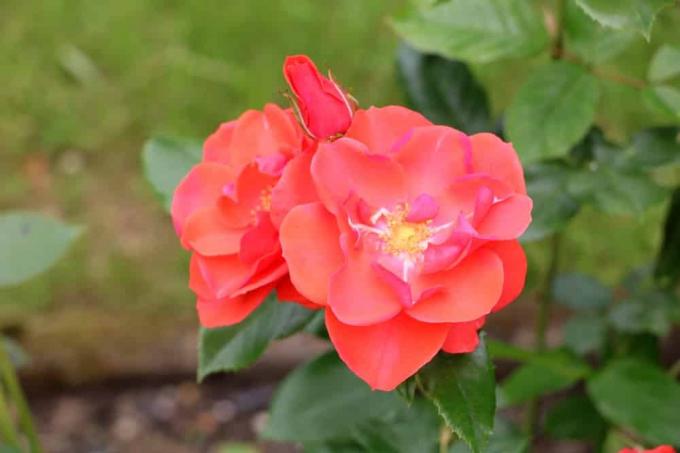
In addition to bare-root roses, so-called container roses are also available in specialist shops all year round. These are roses that are planted in a pot and their roots are therefore surrounded by soil. The planting season for container roses extends throughout the year, provided the ground is not frozen.
- Roots are already in the ground
- Roses are already rooted
- Planting is possible all year round
- However, autumn planting is ideal
Container roses can be planted all year round, but not every season is equally suitable. The same applies here: Hot temperatures are stressful for the rose. Although the container rose has rooted its roots, it still has to conquer the bed with its roots. Until then, the plant cannot provide itself with sufficient water on hot days. Therefore, only plant roses in the warm season if you can find time to water them every day.
A notice:
In horticulture, small pots in which roses are planted are called rose pots. From a volume of 5 liters they are called containers. Hence the name container rose.
Planting time for climbing roses
The climbing rose is no exception among rose varieties when it comes to the ideal planting time. It is also best to enter its new location on an autumn day. The climbing rose has already shed its leaves and is preparing for hibernation. Planting in autumn does not cause her any stress, the so-called "plant shock" stays away.
- Planting time is from October to April
- Ground should not be frozen
- October is the best month
- Fall and winter provide plenty of time for rooting
- the fine hair roots in particular can develop
- in spring the rose can sprout vigorously
A notice:
Climbing roses bought in the spring are usually not fresh, but have been stored in a cold store for several months. They are more susceptible to diseases and often grow worse.
Repotting tub roses
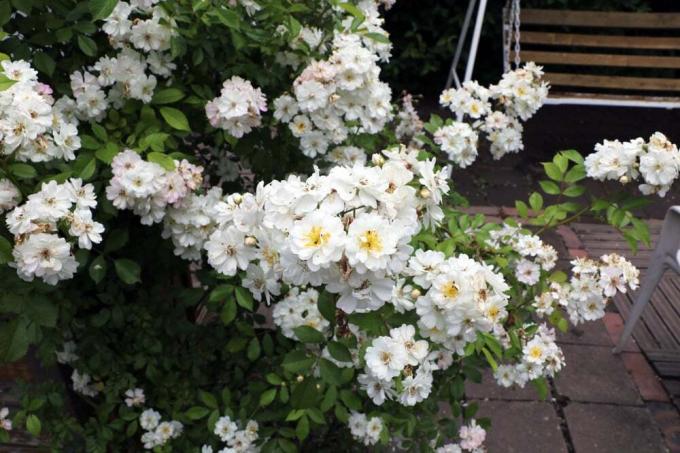
Some rose bushes do not grow in beds but in tubs. From time to time, these pot roses need a larger pot and always new, fresh substrate. The extra space in the new pot must be conquered by the roots without affecting above-ground growth and abundance of flowers. Therefore, it is important to do the repotting at a suitable time.
- Repotting is basically possible at any time
- provided the temperature is in the positive range
- However, autumn is recommended
- alternatively also in spring
Repotting is a small "shock" for the plant, which can have undesirable consequences. Especially if the rose is transplanted during its main growing season, further growth can suffer:
- when repotting, part of the roots are damaged
- Plant cannot be adequately supplied
- necessary root growth robs additional power
- as a result, leaves and flowers are often dropped
For this reason, repotting should not take place during the growing season if possible. From autumn, when the rose is dormant, until the first budding in spring, the rose can get a new pot. There is no shock and the plant can develop wonderfully in the spring.
Why roses are offered in spring
If fall is the right time of year to plant roses, why are there so many rose plants available for purchase in spring? You can find them in large numbers in garden centers or even discount stores. This offer appeals to the desire for gardening, which has been rekindled with spring. Many people do not enjoy digging in the garden and planting new plants in the wet and uncomfortable autumn. That is also understandable. It is also possible to plant the roses in spring. However, the best season is and remains autumn.
 garden editorial
garden editorial I write about everything that interests me in my garden.
Learn more about types of roses

Pruning wild roses: 6 tips for trimming wild roses
Wild roses should not be missing in any natural garden. They are easy to care for and bloom on two-year-old wood. The delicate blossoms and autumnal rosehips enchant the garden well into winter. To maintain their beauty, however, some maintenance is necessary.
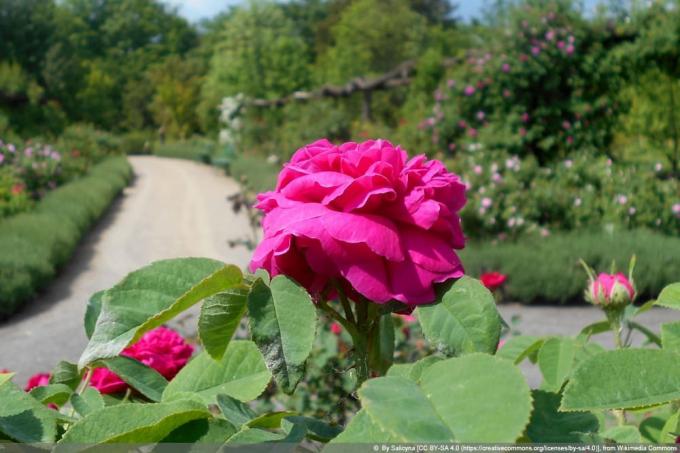
18 historical roses with picture | Varieties of roses for the home garden
Creating a rose garden is not as easy as you might think. The gardener often only becomes aware of the variety of different flower colors on the market when the purchase decision is imminent. So that the selection does not have to be made spontaneously and that it takes into account both the appearance and the location requirements can be optimally adapted to the circumstances of his garden, he will find an overview of 18 historical ones here varieties of roses.

Moss rose (Rosa centifolia var. muscosa): care from A to Z
The moss rose (Rosa centifolia var. Muscosa) is a profusely flowering old rose variety that resulted from a bud mutation. The special thing about her is the green to brownish moss on the buds, sepals and flower stalks and their sweet, slightly resinous scent.

Making roses winter-proof: fleece, bark mulch & Co | Ideal time
Roses depend on good winter protection so that the royal blooms can be repeated next year. The focus is on specific precautions for the crown, trunk and roots, tailored to the respective rose type. This guide gives a practical explanation of when and how to best winterize your roses.
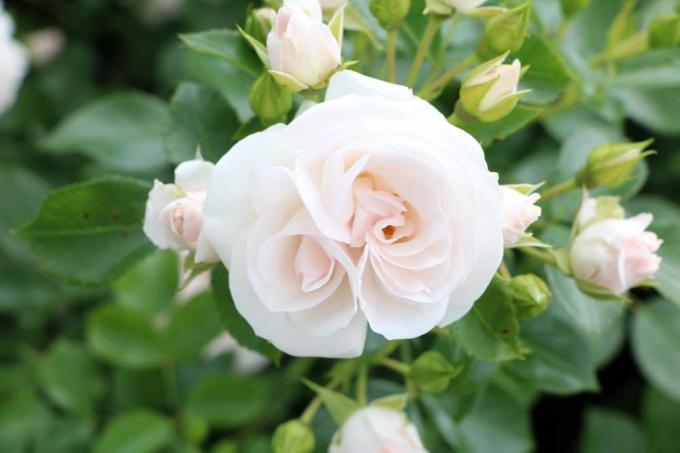
Create a rose bed: easy to care for with roses, perennials and stones
The rose is not considered the queen of flowers for nothing. Her beauty is simply incomparable. It goes without saying that under these conditions it belongs in every garden. Here you can learn how to properly plant a rose bed and properly care for the royal plants.
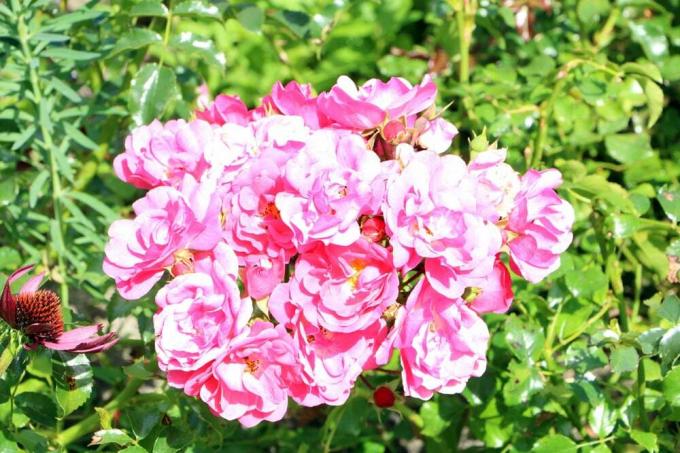
Tub roses: rose care in the pot | Repot roses properly
In the summer months, the balcony and terrace can be embellished with blooming roses, as these flowers can also be planted in tubs. However, due to the deep roots, there are some important factors to consider when choosing the planter, location, care and repotting.



